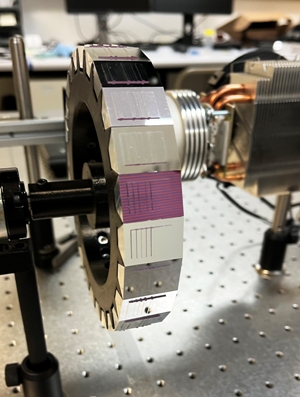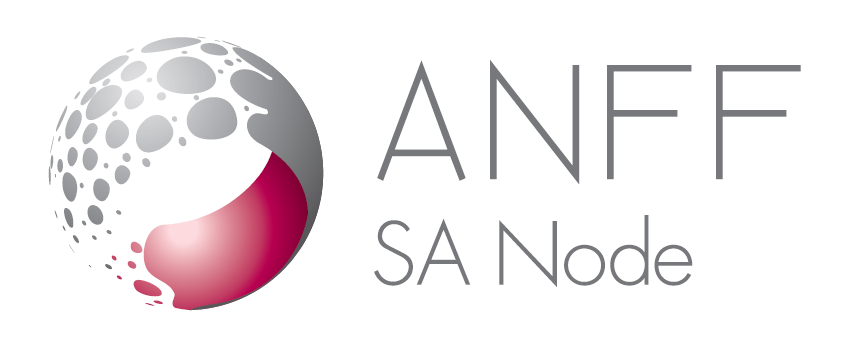By pushing the boundaries of fabrication possibilities, the production process for a new artwork has uncovered new digital fabrication solutions with wide-ranging applications.
 Artist Dr Deirdre Feeney has highly technical requirements for her MirrorMirror artwork, which explores the processes of image-making. The piece calls for a purpose-built, specialised mirror engineered to have 24 facets, each featuring a different 3D patterned surface. As part of the Australian Research Centre for Interactive and Virtual Environments (IVE) team at the University of South Australia, Dr Feeney knew the organisation’s expertise in Computer Aided Manufacturing (CAM) processes and Computer Aided Design (CAD) would be essential in facilitating the mirror’s creation.
Artist Dr Deirdre Feeney has highly technical requirements for her MirrorMirror artwork, which explores the processes of image-making. The piece calls for a purpose-built, specialised mirror engineered to have 24 facets, each featuring a different 3D patterned surface. As part of the Australian Research Centre for Interactive and Virtual Environments (IVE) team at the University of South Australia, Dr Feeney knew the organisation’s expertise in Computer Aided Manufacturing (CAM) processes and Computer Aided Design (CAD) would be essential in facilitating the mirror’s creation.
IVE partnered with the Australian National Fabrication Facility (ANFF) to manufacture the mirror. In the iterative process that followed, the boundaries of micro-machining capabilities were pushed, resulting in breakthroughs that are transformational for both industry and research. With its new expanded capabilities, ANFF is now machining other devices with ultra-precision finishes, including micro-injection moulds used in the development of life-changing therapeutic applications.
A CREATIVE QUESTION
With a background in glass-making and the projected moving image, Dr Feeney creates image system artworks using materials such as glass that physically and emotionally engage the viewer. For her MirrorMirror project, she requires a highly specialised mirror to act as a moving component inside an image system. While Dr Feeney could envisage the part and its usage, the manufacture of such a precise technical component was beyond local capabilities. Nonetheless, ANFF and IVE decided to take the project on – exploring whether they could push past current limits to make the mirror together.
IVE used CAM and CAD processes to prototype mirror solutions in collaboration with ANFF. Some early fabrication techniques showed promise – with the chrome coating of milled aluminum parts, and the coating of 3D-printed components with diced silicon wafer achieving good reflectivity, but ultimately scattering and losing too much light.
The breakthrough was the addition of a mono-crystal diamond cutting tool in the fabrication process. With this tool, ANFF could cut and optically polish the mirror facets to a surface roughness of 7nm Sa and sculpt much smaller features. This allowed the mirror to work as an optimal transmitter of image light within the artwork.
NEW POSSIBILITIES
With this significant extension of its fabrication capabilities ANFF is both executing upon and exploring an array of new applications. The ultra-precision fabrication process is being applied to a broad spectrum of projects including micro-injection moulds used in researching therapeutic and bioengineering possibilities in areas like IVF. The surface finish and clarity of finished parts created using the mono crystal diamond cutting tool have also enabled ANFF to investigate potential collaborations with researchers and industry working in space optics.
The successful fabrication of these patterned mirrors also extends the possibilities in Dr Feeney’s creative practice and that of other artists. When these components are used in publicly exhibited artworks, they will help audiences to delve into the realities of how images are formed and perceived. As they capture imaginations, the possibility of new artistic uses will likely proliferate.
"Dr Feeney’s project has effectively taken us to another realm of surface finish and small feature height accuracy. Using a mono crystal diamond cutting tool, we’ve reduced the surface roughness to 7nm Sa and machine features ten times smaller than we’ve previously achieved. It’s been a steep learning curve within a short time frame, but the results are transformational. ANFF-SA can now machine other devices requiring ultra-precision finishes in-house, such as micro injection moulds, instead of ordering them from overseas, significantly reducing iteration and prototyping times for our clients."
Simon Doe
National Manager, ANFF & Facility Manager
Australian National Fabrication Facility - SA

For more information or to discuss potential projects contact: Deirdre.Feeney@unisa.edu.au


